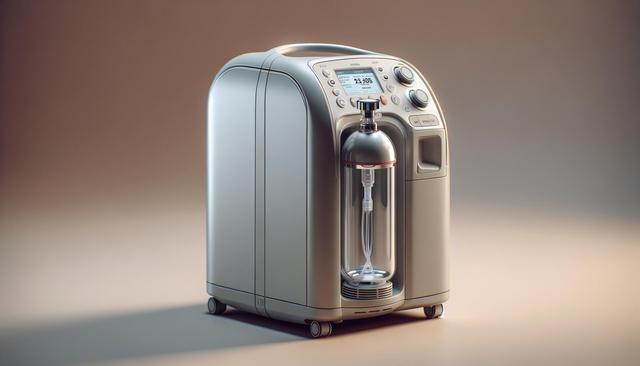Understanding How Oxygen Concentrators Work
An oxygen concentrator is a medical device designed to deliver oxygen therapy to individuals who require higher concentrations of oxygen than what is found in ambient air. Unlike traditional oxygen tanks that store a finite amount of oxygen, concentrators work by pulling in air from the environment, filtering out nitrogen, and delivering purified oxygen to the user. This process allows for a continuous supply of oxygen, making it a practical solution for long-term or home-based therapy.
These devices typically consist of a compressor, sieve bed filter, oxygen tank, and valves. The compressor draws in air and directs it through the sieve bed, where nitrogen is removed. The resulting oxygen is then stored briefly before being delivered through a nasal cannula or mask. Because they rely on ambient air and electricity, oxygen concentrators reduce the need for frequent refills or replacements, which is a major benefit for those managing chronic respiratory conditions at home.
The Shift Toward Home-Based Oxygen Therapy
In recent years, there has been a noticeable shift from hospital-based to home-based care for individuals with respiratory conditions such as chronic obstructive pulmonary disease (COPD), pulmonary fibrosis, or even recovery from certain viral infections. Oxygen concentrators play a central role in enabling this transition, offering a more flexible and less restrictive form of breathing support.
Home oxygen concentrators are particularly beneficial due to their:
- Portability and compact design
- Ease of use with minimal training required
- Continuous oxygen supply without the need for heavy cylinders
- Lower long-term costs compared to traditional oxygen delivery systems
These advantages have made them a preferred choice among healthcare providers and patients seeking convenience without compromising on therapy quality.
Portability and Technological Advancements
Modern oxygen concentrators have evolved significantly in terms of portability and technology. Many newer models are lightweight, battery-operated, and designed for use during travel, allowing users to maintain an active lifestyle. These portable units often come with features such as adjustable flow settings, user-friendly interfaces, and alert systems to ensure safe operation.
Technological improvements are also expanding capabilities through smart integrations. Some concentrators now include app connectivity, allowing for remote monitoring and adjustments by healthcare providers. Others feature energy-efficient designs and quieter operation, which enhance the overall user experience. These innovations are making oxygen concentrators more accessible and appealing for home use, and are contributing to a more patient-centered approach to respiratory care.
Choosing the Right Oxygen Concentrator
Selecting the appropriate oxygen concentrator depends on several factors, including the user’s medical condition, lifestyle, and oxygen flow requirements. Stationary concentrators are typically used for home settings where mobility is not a priority, while portable units are ideal for those who want flexibility and the ability to travel.
When choosing a device, consider the following:
- Flow rate capacity: Ensure the device meets prescribed oxygen levels
- Power source: Check for battery life and backup options
- Noise level: Important for nighttime use or quiet environments
- Maintenance requirements: Some models require regular filter changes or cleaning
Consulting a healthcare provider is essential in determining the most suitable model. They can provide guidance based on clinical needs and ensure that the device complements the overall treatment plan.
Safety, Maintenance, and Daily Use
While oxygen concentrators are generally safe and easy to use, proper maintenance and adherence to safety guidelines are crucial for optimal performance. Users should regularly inspect their devices, keep them clean, and avoid placing them near open flames or heat sources, as oxygen supports combustion.
Routine maintenance includes:
- Cleaning or replacing air intake filters
- Checking the nasal cannula or mask for wear
- Monitoring for audible alarms or error messages
- Ensuring the device is placed in a well-ventilated area
Following the manufacturer’s instructions and scheduling periodic checks with a healthcare provider can help extend the lifespan of the concentrator and ensure consistent oxygen delivery. Educating users and caregivers on daily best practices also enhances safety and confidence in managing home oxygen therapy.
Conclusion: A Reliable Solution for Long-Term Respiratory Support
Oxygen concentrators are proving to be a reliable and efficient solution for individuals who require long-term oxygen therapy. They support a shift toward more autonomous, home-based care and offer a range of features that cater to different medical and lifestyle needs. With continued advancements in technology and increasing availability of portable options, these devices are helping many maintain independence and improve quality of life. For those exploring options for home breathing support, an oxygen concentrator may offer the balance of convenience, safety, and functionality that fits seamlessly into daily life.




Leave a Reply